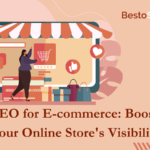Businesses are continuously looking for efficient ways to connect with their target audience and increase sales in the dynamic realm of e-commerce. Google Ads has become a significant instrument for e-commerce companies, allowing them to interact with prospective clients and improve their online presence. An e-commerce venture’s success can be significantly impacted by knowing how to use Google Ads successfully. This thorough guide seeks to empower e-commerce business owners to maximize the potential of Google Ads by breaking down the procedure step-by-step.
Understanding Google Ads
Google offers a potent advertising platform called Google Ads, which was formerly known as Google AdWords. It allows companies to display their advertisements on the search engine and advertising network of Google. These advertisements may show up on YouTube, websites, applications, and search results pages. Businesses can select the best option from a variety of ad styles to market their goods and services.
Understanding E-Commerce
Electronic commerce, or “e-commerce,” has completely changed how consumers and corporations conduct business. It includes the online purchase and sale of products and services, providing a practical, round-the-clock platform for transactions across national borders. Businesses can use e-commerce to access a worldwide client base, offer customized shopping experiences, and accelerate transactions. This creates a vibrant marketplace that rewards creativity and customer pleasure. By embracing technology and connectivity to satisfy the changing demands and tastes of modern consumers, this digital ecosystem is continuing to alter retail and shape the future of commerce.

Step 1: Setting Clear Objectives
Setting clear objectives is the foundational step in any successful Google Ads campaign. It is essential to define specific, measurable, achievable, relevant, and time-bound (SMART) goals. For e-commerce, these objectives might include increasing sales, boosting website traffic, or enhancing brand awareness. Specific goals, like achieving a target cost per acquisition (CPA) or a desired return on ad spend (ROAS), provide a clear direction for your advertising strategy. Setting these objectives ensures that you can measure the success of your campaigns accurately and make informed decisions for continuous improvement.
Step 2: Keyword Research
Keyword research is the foundation of a successful Google Ads campaign. To identify effective keywords and understand audience search behavior. Use keyword research tools like Google Keyword Planner, SEMrush, or Ahrefs to find relevant keywords with high search volume and low competition.
Step 3: Crafting Compelling Ad Copy
Your ad copy is the first impression potential customers have of your e-commerce business. It’s crucial to create compelling and concise ad copy that resonates with your target audience. Highlight unique selling points, promotions, or any competitive advantages your products offer. A clear and persuasive call-to-action is essential to prompt user engagement. Test different ad variations to discover what messaging and formats are most effective, and adjust your ad copy accordingly.
Step 4: Setting Up Google Ads Account
Creating your Google Ads account is the first step in bringing your campaign to life. Start by selecting the appropriate campaign type, which could be Search Network, Display Network, Shopping, or Video, depending on your e-commerce business needs. Specify your daily budget and bidding strategy to control your ad spend effectively. Carefully define your target audience by demographics, location, and other relevant factors. Don’t forget to set up ad extensions like site link extensions, callout extensions, and structured snippet extensions to enhance your ad’s visibility and effectiveness.
Step 5: Creating Targeted Ad Groups
Ad group organization is essential for successful Google Ads campaigns. Organize your ads into ad groups based on specific product categories, themes, or audience segments. This segmentation allows for more tailored ad copy and better targeting. Ensure that your keywords and ad copy within each ad group are closely related, ensuring a strong alignment between the user’s search intent and the ad they see.
Step 6: Designing Landing Pages
Optimizing your landing pages is critical to providing a seamless user experience and increasing conversion rates. Landing pages should be highly relevant to the ad they link from and offer clear information about the promoted product. Ensure that your landing pages are mobile-friendly, load quickly, and feature a prominent and compelling call-to-action. Conduct A/B testing on landing page elements like headlines, images, and form fields to discover which variations drive the most conversions. Continuous optimization of landing pages is key to improving your campaign’s overall performance.
Step 7: Monitoring and Optimization
Monitoring the performance of your Google Ads campaigns is an ongoing task. Pay close attention to key metrics such as click-through rate (CTR), conversion rate, and ROAS. Regularly review the data to identify areas where your campaign can be optimized. Experiment with different ad variations, adjust bids, and refine your keyword list. Implement negative keywords to prevent your ads from showing for irrelevant searches. Optimization is an iterative process, and consistent monitoring and adjustments are vital to achieving the best results.
Step 8: A/B Testing
A/B testing, or split testing, is a technique used to compare two or more variations of an element to identify the one that performs better. In the context of Google Ads, A/B testing involves creating different versions of ads and comparing them to determine which resonates more effectively with your audience. To accurately measure the impact of changes on your campaign’s performance, it is recommended to test one variable at a time, such as the headline, ad copy, or call-to-action. By conducting A/B tests systematically, you can refine your ad strategy and ensure you deliver the most compelling message to your potential customers.
Step 9: Remarketing Strategies
Remarketing strategies can significantly boost your conversion rates by targeting users who have previously visited your e-commerce site but didn’t make a purchase. When potential customers visit your website and view or add products to their carts but still need to complete the purchase, you can use remarketing techniques to re-engage them. By creating specific ad content that reminds these users of the products they showed interest in, you can keep your brand and products top of mind for them. This is a highly effective way to entice potential customers to complete their purchases and increase your sales.
Step 10: Continuous Learning and Adaptation
The digital landscape and Google Ads platform are constantly evolving. Staying ahead in the e-commerce space requires ongoing learning and adaptation. Stay updated with the latest features, trends, and best practices within Google Ads. Attend webinars, read industry blogs, and participate in online communities to stay informed. Regularly review your campaigns and adapt your strategies to meet changing market dynamics and customer preferences. Continuous learning and adaptation are essential to remaining competitive and achieving long-term success in e-commerce advertising.

Google Ads for E-Commerce
Google Ads, when executed strategically, can be a game-changer for e-commerce businesses. BestoSEO specializes in maximizing the potential of this platform to drive growth, increase sales, and establish a strong online presence. By following these step-by-step guidelines, we can help your business to harness the power of Google Ads and unlock the full potential of your e-commerce ventures. Contact us today and get started.
In a competitive online landscape, Google Ads has emerged as an indispensable tool. BestoSEO expertise and dedication to crafting and optimizing these campaigns can propel e-commerce businesses towards sustained success in the digital marketplace.











